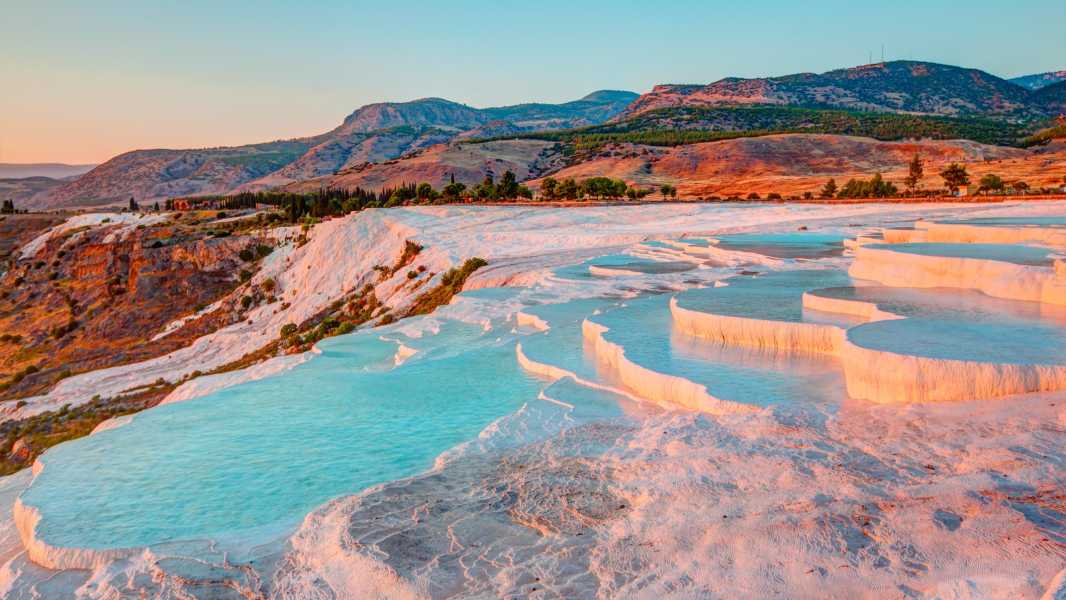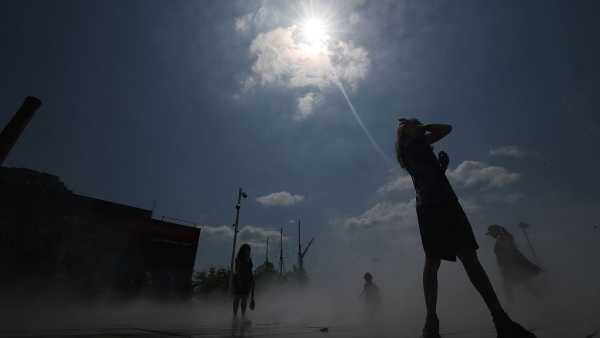
The Pamukkale travertines are located in southwestern Turkey. (Photo credit: murat4art/Getty Images)
Pamukkale is a town in Turkey famous for its magnificent travertine terraces and thermal pools. Its name, translated from Turkish as “cotton castle”, refers to the height and dazzling white color of this natural wonder, which stands out sharply against the background of the surrounding arid plain.
Travertine is a type of rock composed primarily of calcium carbonate, which forms from mineralized spring water. Pamukkale is famous for its hot springs, which bubble up from the top of a 200-meter (660-foot) cliff overlooking the town. The water flows down the slope, coating the rocks with calcium carbonate that has accumulated over thousands of years, creating a snow-white limestone crust.
The travertines of Pamukkale are so voluminous that from a height and from a distance they resemble a small glacier.
Although the Pamukkale travertines may look like a winter wonderland, they are located in a warm and sunny region of southwestern Turkey.
The water that trickles down the slopes is also warm — 19 to 57 degrees Celsius (66 to 135 degrees Fahrenheit), according to NASA Earth Observatory — and can reach boiling temperatures. It collects in pools that form on the terraces, creating natural hot tubs and infinity pools. They cascade into each other, and stalactites and other limestone formations form along ledges up to 6 meters (20 feet) high where the water has dripped for millennia.
Pamukkale is a UNESCO World Heritage Site, but there's much more to the list than just bubbling baths. The travertines have been a tourist attraction since ancient times, when the ancient Greeks in particular built thermal baths, monuments, and complex canal systems to bring spring water to nearby villages and fields.
The Attalid kings of Pergamon, an ancient Greek state that ruled much of Asia Minor during the Hellenistic era, founded the thermal spa town of Hierapolis near the travertines in the second century BC. Its ruins survive to this day and are also on the UNESCO list. The site was previously home to an ancient cult, according to the UN.
Hierapolis reached its peak in the second and third centuries AD, after the Romans conquered the city and rebuilt it after an earthquake. Remains from the Greco-Roman and late Byzantine periods include several baths, a monumental arch, a theater, a necropolis, a nymphaeum (a monument dedicated to water nymphs), and the ruins of a temple.
Interestingly, according to UNESCO, some of these monuments, such as the Temple of Apollo, stood on top of a geological fault, which likely allowed harmful gases to leak into the space between their walls.
The ruins of Pamukkale are generally well preserved, but large numbers of visitors threaten the integrity of the site, according to UNESCO. Particularly vulnerable is the area where tourists can swim among ancient columns and marble decorations that collapsed after an earthquake in the seventh century.
Discover many more amazing places where we'll tell you about the wonderful history and science behind some of the most spectacular landscapes on Earth.
TOPICS incredible places
Sourse: www.livescience.com





